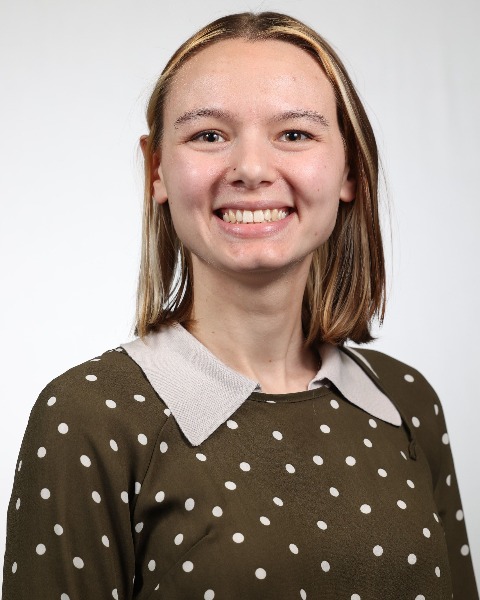Anatomy Education Posters
Poster: Anatomy Education Posters
151 - Indiana High School Student Awareness of Healthcare Career Options
Sunday, March 24, 2024
5:00pm - 7:00pm US EDT
Location: Sheraton Hall
Poster Board Number: 151
There are separate poster presentation times for odd and even posters.
Odd poster #s – first hour
Even poster #s – second hour
Co-authors:
There are separate poster presentation times for odd and even posters.
Odd poster #s – first hour
Even poster #s – second hour
Co-authors:
Andrew Cale, PhD - Anatomy, Cell Biology & Physiology - Indiana University School of Medicine

Rebecca L. Wisner, MS
PhD Candidate
Indiana University School of Medicine
Indianapolis, Indiana, United States
Presenting Author(s)
Abstract Body : Introduction/Objective
High School is a critical period in which students begin long-term career preparations. However, students may not be well-informed of the full diversity of healthcare professions which limits their ability to make informed career decisions. Therefore, the aim of this study was to assess the awareness of Indiana high school students with various healthcare career options.
Materials and Methods
High school students (9th-12th grade) who were visiting Indiana University School of Medicine for the Human Anatomy Lab Tour Program were invited to participate in this IRB-approved study. At the end of the tour, students were presented with a nine-item, online survey regarding their awareness of 37 healthcare professions, ranging from common (e.g., medical doctor, nurse) to potentially lesser-known (e.g., podiatrist, orthotist). For each career option, students reported their awareness of the career itself, its highest required degree, required years of training, roles and responsibilities, and median annual salary using either multiple-choice or Likert scale options. Upon survey completion, students were given an online spreadsheet that detailed all 37 healthcare professions for their own future career planning. Descriptive statistics were performed on the collected responses.
Results
A total of 57 students completed the survey in full, with most participants in 11th or 12th grade. Students who identified as female reported greater interest in pursuing a health career (85%) than their male peers (62%). The most familiar ( >70% reported familiarity) careers included medical doctor, physician assistant, occupational therapist, physical therapist, and registered nurse. The least familiar (< 33% reported familiarity) were podiatrist, child life specialist, orthotist, perfusionist, and pathology assistant. Students tended to overestimate the degree and training requirements for many professions (e.g., doctoral degrees for dieticians). Interestingly, salaries for each profession were ranked accurately or above the actual range.
Conclusion
This study demonstrates that students are not fully aware of all healthcare professions, particularly those less prevalent in the media and society. Although students may recognize a profession, their knowledge of the educational and training commitments required to serve in that role may still be lacking.
Significance/Implication
These insights can inform how to best promote the full diversity of healthcare professions to high school students. While some options are well-known, lesser-known professions may better fit an individual’s desired lifestyle and career goals and should be promoted more effectively to facilitate informed career planning.
High School is a critical period in which students begin long-term career preparations. However, students may not be well-informed of the full diversity of healthcare professions which limits their ability to make informed career decisions. Therefore, the aim of this study was to assess the awareness of Indiana high school students with various healthcare career options.
Materials and Methods
High school students (9th-12th grade) who were visiting Indiana University School of Medicine for the Human Anatomy Lab Tour Program were invited to participate in this IRB-approved study. At the end of the tour, students were presented with a nine-item, online survey regarding their awareness of 37 healthcare professions, ranging from common (e.g., medical doctor, nurse) to potentially lesser-known (e.g., podiatrist, orthotist). For each career option, students reported their awareness of the career itself, its highest required degree, required years of training, roles and responsibilities, and median annual salary using either multiple-choice or Likert scale options. Upon survey completion, students were given an online spreadsheet that detailed all 37 healthcare professions for their own future career planning. Descriptive statistics were performed on the collected responses.
Results
A total of 57 students completed the survey in full, with most participants in 11th or 12th grade. Students who identified as female reported greater interest in pursuing a health career (85%) than their male peers (62%). The most familiar ( >70% reported familiarity) careers included medical doctor, physician assistant, occupational therapist, physical therapist, and registered nurse. The least familiar (< 33% reported familiarity) were podiatrist, child life specialist, orthotist, perfusionist, and pathology assistant. Students tended to overestimate the degree and training requirements for many professions (e.g., doctoral degrees for dieticians). Interestingly, salaries for each profession were ranked accurately or above the actual range.
Conclusion
This study demonstrates that students are not fully aware of all healthcare professions, particularly those less prevalent in the media and society. Although students may recognize a profession, their knowledge of the educational and training commitments required to serve in that role may still be lacking.
Significance/Implication
These insights can inform how to best promote the full diversity of healthcare professions to high school students. While some options are well-known, lesser-known professions may better fit an individual’s desired lifestyle and career goals and should be promoted more effectively to facilitate informed career planning.

